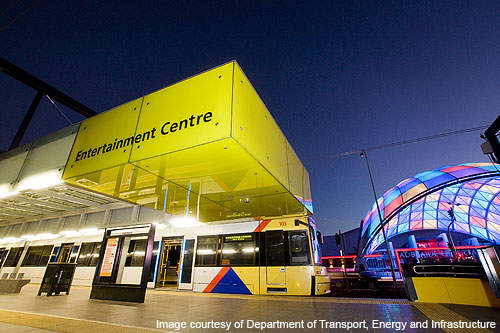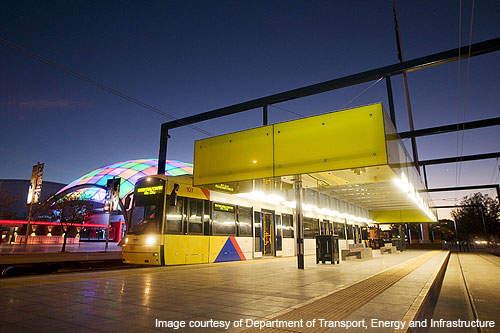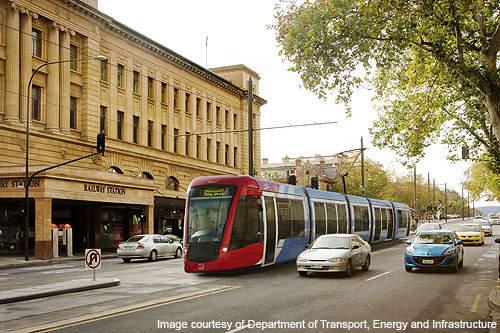The Coast-to-Coast Light Rail project is a 2.8km tram line starting from the City West Stop along the North Terrace and Port Road through to Adelaide Entertainment Centre. The line passes through Bonython Park and the new Royal Adelaide Hospital. It was officially opened to public in March 2010 and is operated by TransAdelaide. The estimated cost of the project was $100m.
The project is an extension of the existing tram line running between Victoria Square in the city centre and City West Campus. The tram runs on the dedicated corridor and is specifically designed to accommodate passengers with low vision and limited mobility. The stops are integrated with the existing and new pedestrian crossings. The project continues to offer free service from South Terrace to West Terrace.
It is also a part of the biggest single investment transport plan, costing $2bn, undertaken by the South Australian Government in 2008. The aim of the light rail program was to complete the extension to Adelaide Entertainment Centre by 2010, to West Lakes by 2015 and Port Adelaide and Semaphore by 2018. It is named ‘Coast to Coast’ as the tram line will connect the beach front at Glenelg and pass through the city to West Lakes and to Semaphore through the heart of Port Adelaide.
The Adelaide Light Rail system uses a multi-modal ticket system known as Metroticket. It is used for travel between trains, trams and buses irrespective of the services availed. The magnetic strip on the ticket encodes validity.
Background
The Adelaide Light Rail System, operating only trams, was dismantled in the middle of the 20th century leaving only the 12km long Glenelg Tram line between Victoria Square and Moseley Square on the beach front at Glenelg.
It was extended in 2007 from Victoria Square downwards to King William Street along the North Terrace to a terminus at the Morphett Street Bridge.
The extended line now has stops adjacent to main city points like Rundle Mall, The Adelaide Railway Station and the City West Campus at the University of South Australia.
The Coast to Coast project
The Coast to Coast Light Rail project involved construction of a dual tram corridor and four tram stops with seating and controlled pedestrian crossings. The tram stops are slightly elevated from the road via a ramp. Two of the stops are constructed before the intersections at North Terrace and the Port Road.
The platforms were constructed by an Australian engineering and construction company Thesis in partnership with Parsons Brinkerhoff, Connell Wagner, Hassell and Arrunga Surface Solutions.
A separate section was created at the intersections for the buses for free traffic movement. The project also provides a park and ride facility for 400 vehicles within the vicinity of Adelaide Entertainment Centre.
The location of the tram corridor was decided after accounting for factors such as safety and accessibility, support to urban regeneration opportunities, traffic levels at Port Road and North Terrace and with a provision for future expansion of the services to West Lakes, Port Adelaide and Semaphore.
The project is also designed for the use of dual voltage trams, which can travel on light as well as heavy rail networks.
Rolling stock
The new extension line uses Bombardier’s 16 Flexity Classic trams as well as Alstom’s Citadis trams.
It has a low floor with three set of doors for easy boarding and alight of passengers on push and wheel chairs.
It is a two car tram but is usually operated as a single vehicle during peak hours.
It operates on both the standard (1,435mm) as well as metre gauges (1,000mm).
It is 2.4m wide and 30m long with a seating capacity for 70 passengers.
The line also uses five Heritage H-Class trams in addition to the 16 vehicles. The H-Class is usually used on weekends, public holidays and special occasions.
There are plans of withdrawing the heritage H-Class trams from the light rail system in future.




